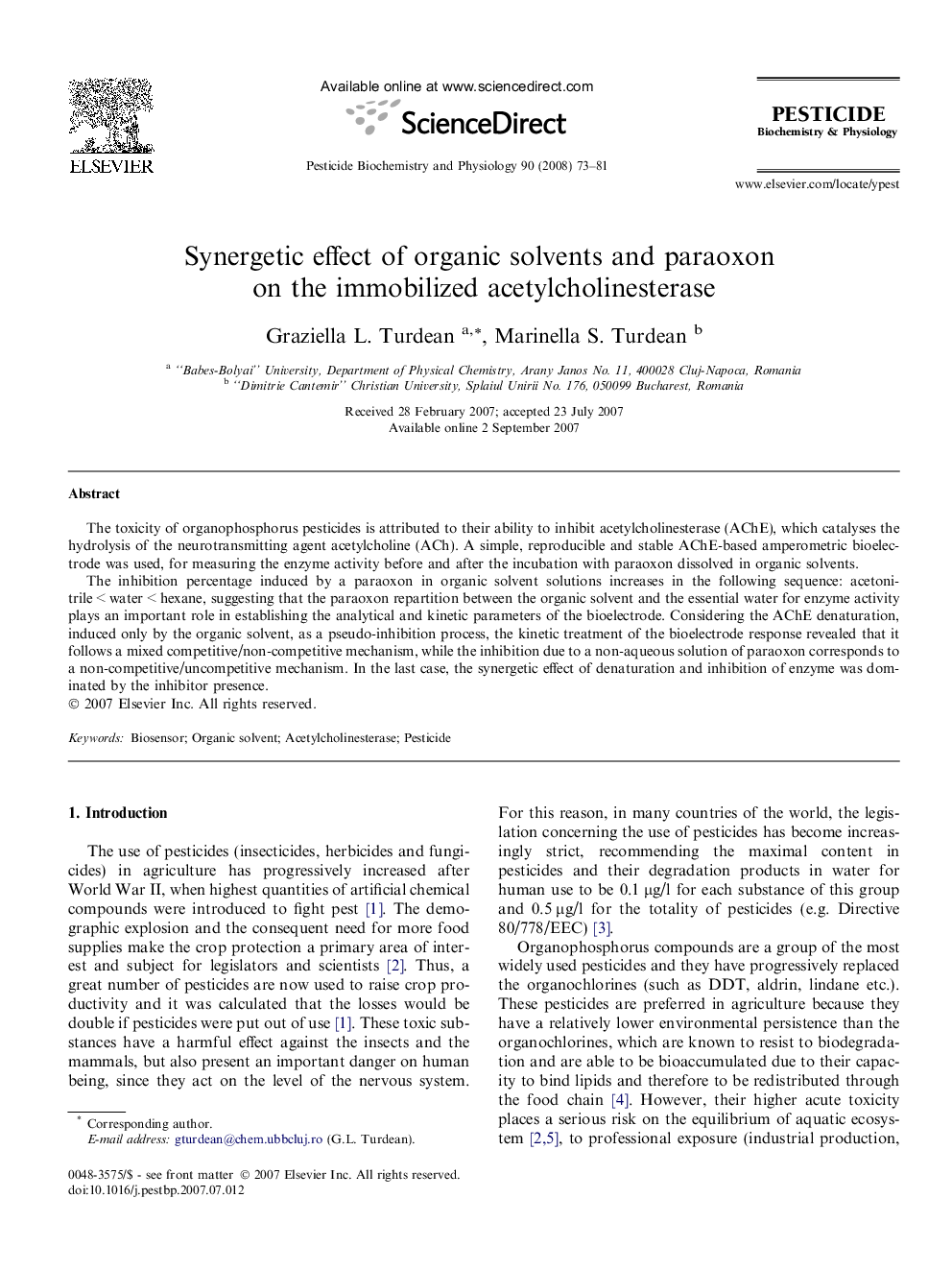| Article ID | Journal | Published Year | Pages | File Type |
|---|---|---|---|---|
| 2009999 | Pesticide Biochemistry and Physiology | 2008 | 9 Pages |
The toxicity of organophosphorus pesticides is attributed to their ability to inhibit acetylcholinesterase (AChE), which catalyses the hydrolysis of the neurotransmitting agent acetylcholine (ACh). A simple, reproducible and stable AChE-based amperometric bioelectrode was used, for measuring the enzyme activity before and after the incubation with paraoxon dissolved in organic solvents.The inhibition percentage induced by a paraoxon in organic solvent solutions increases in the following sequence: acetonitrile < water < hexane, suggesting that the paraoxon repartition between the organic solvent and the essential water for enzyme activity plays an important role in establishing the analytical and kinetic parameters of the bioelectrode. Considering the AChE denaturation, induced only by the organic solvent, as a pseudo-inhibition process, the kinetic treatment of the bioelectrode response revealed that it follows a mixed competitive/non-competitive mechanism, while the inhibition due to a non-aqueous solution of paraoxon corresponds to a non-competitive/uncompetitive mechanism. In the last case, the synergetic effect of denaturation and inhibition of enzyme was dominated by the inhibitor presence.
